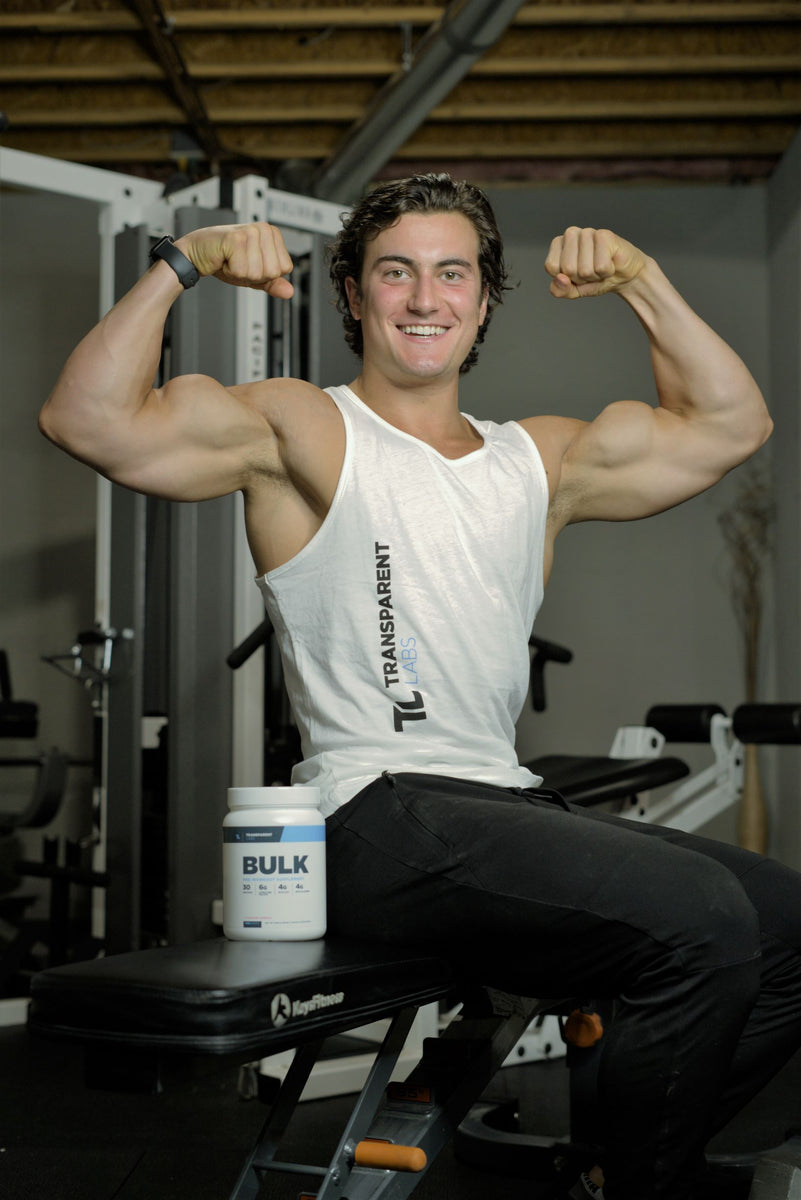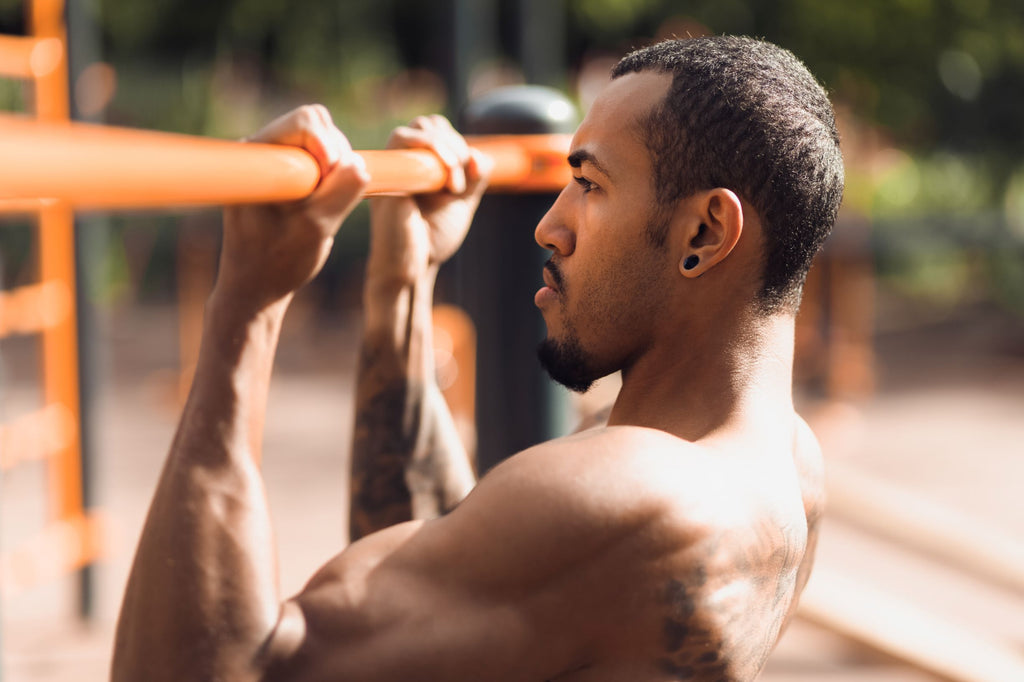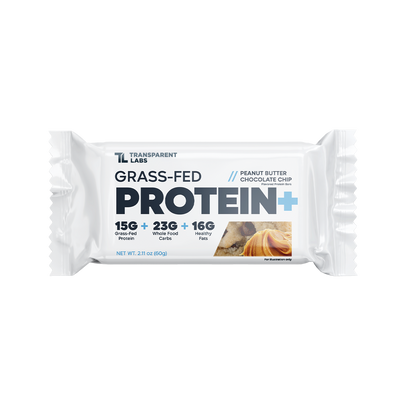7 Exercises to Get the Most from Your Bicep Workouts

The 7 Best Bicep Exercises for Your Arm Workouts
When it comes to building bigger biceps, there seem to be two popular strategies:
- The “more is better” approach, repping endless dumbbell or barbell curls, often with a heavier weight than you can comfortably handle.
- Not bothering with bicep workouts at all, or tagging a few half-hearted reps on at the end of your back workout.
But the most effective bicep workouts don’t just focus on sets, reps, and volume — they emphasize performing the right exercises in the right way.
These seven biceps exercises do just that while challenging the biceps in a different way to maximize hypertrophy (muscle size), optimize strength gains, and add definition to your upper arms. In this article, we’ll look at the basics of building the biceps, then give you specific instructions for each of our top bicep exercises.
Biceps Basics: Building Strength and Size
Before we discuss how to train the biceps, we need to understand the muscle. The biceps muscle, or biceps brachii, is the large muscle located on the front of the upper arm, connecting the shoulder blades with the elbow and forearm.
The biceps brachii is made up of two heads: the long head, which runs along the outside of the upper arm, and the short head, which runs along the inside. It has two main jobs: the flexion and supination (rotation) of the forearm and support of the underlying brachialis muscle, the elbow flexor. It’s also attached to the coracobrachialis, which aids flexion and adduction (inward movement) of the shoulder joint.
Building biceps is not just about size. Strong biceps are integral to many compound movements, including the bench press, barbell row, and pull-up, so neglecting to train the biceps muscle can compromise overall strength.
Whether the focus is on strength or hypertrophy, if you want to build muscle, you need progressive overload. But as you will learn, quality counts over quantity when it comes to bicep workouts.
Not All Biceps Curls Are Created Equal

There’s a reason why bodybuilders often opt for the classic front double-biceps pose. The biceps are one of the easiest muscles to show off. That’s because their only function is to flex and extend the elbow joint.
This means all biceps exercises essentially are biceps curls or a biceps curl variation. But that doesn’t mean all bicep curls are created equal.
For stronger and bigger biceps, choose variations such as hammer curls or preacher curls to target the two heads of the brachii or brachialis. Technique is key: Add too much weight too quickly, and it’s easy for other muscle groups such as the shoulder and back muscles to take over.
Instead, challenge and stress the biceps muscle in different ways to ensure progressive overload without compromising form. Focus on both the eccentric (the lengthening or lowering portion of the curl) and concentric movements (the contracting or lifting portion of the curl).
7 Bicep Workouts To Maximize Muscle Growth
Add these seven bicep exercises to your arm workouts to target the biceps from all angles. Keep these tips in mind for your bicep workouts:
- Aim for 3-4 sets of 8-12 repetitions of each exercise. Biceps exercises are best performed with a light to moderate load so you keep good form and prevent other muscle groups from taking over.
- Focus on form rather than weight, concentrating on squeezing the biceps throughout the movement. Studies show focusing on the mind-muscle connection has a significant effect on strength training, and biceps exercises are a perfect example [1].
- Keep the movement slow and controlled. Repping out countless dumbbell curls might make you feel like a bad-ass, but it won’t maximize muscle growth.
1. Dumbbell Curl or Barbell Curl

Why?: The humble biceps curl places more emphasis on the concentric movement and works both the short and long head of the biceps brachii.
How to do it: Stand with your feet shoulder-width apart, retract your shoulder blades, and keep your elbows tucked in to your sides. Hold the barbell or dumbbells with a supinated grip (underhand grip), and use your biceps to raise the forearms, squeezing the biceps muscle at the top of the movement. Keep wrists and elbows relaxed to maximize bicep load.
Top tips:
- Greater muscle activation has been shown for EZ-bar (angled barbell) and barbell curls over dumbbell curls [2]. Barbells also allow you to increase the weight in smaller increments.
- However, dumbbells can be a good choice for beginners as there is no set-up required and help to even out muscle asymmetries.
- Bicep curls also be performed with resistance bands or the cable machine using a straight bar attachment.
2. Cheat Curl

Why: The careful use of cheat curls in your bicep workouts allows you to place a greater load on the eccentric portion of the lift. This is important for two reasons. First, studies have shown greater muscle growth happens through eccentric overload [3]. Second, eccentric training allows you to use a heavier weight and increase overload. Try working these into your bicep workouts once a week to reap the benefits.
How to do it: Use a barbell and an underhand grip. From your starting position with feet shoulder-width apart and knees slightly bent, use momentum and a slight hip thrust to perform a barbell curl. Hold the barbell at the top of the movement and slowly lower it back down, controlling the descent as much as possible.
Tips:
- The idea of a cheat curl is to use the heaviest weight you can manage, but controlling the negative is crucial, so don’t go too heavy.
- In this move, technique is important to avoid risking injury or placing strain on the lower back, so perfect your form before moving up to a heavier weight.
3. Hammer Curl

Why: Hammer curls work the biceps brachii and target the underlying brachialis. Working this muscle improves overall biceps strength, but it also adds width, not just volume, to your upper arms.
How to do it: Use the same starting position as regular dumbbell curls, but hold the dumbbells with a hammer grip (palms face inwards). Use your biceps to lift the dumbbells one at a time, keep your elbows locked, and squeeze the biceps muscle at the top of the movement.
Tips:
- Bring the dumbbell across your body (towards your opposite shoulder) as you lift them to target the brachialis even more.
- Hammer curls can also be performed with resistance bands or the cable machine using a rope attachment.
4. Concentration Curl

Why: Concentration curls allow for greater isolation of the biceps muscle and therefore, greater biceps activation [4].
How to do it: Sit down on a bench, feet flat on the floor, and legs wide. Hold a dumbbell in your left hand as if you were going to perform a biceps curl. Hinge forwards at the hip and tilt your body slightly inwards, so the outside of your left upper arm presses against the inside of your left thigh.
From this starting position, with the dumbbell almost touching the floor, perform your bicep curls, bringing the dumbbell up towards your shoulder. Keep your elbows fixed in place, pointing towards the floor. As the position prevents you from using momentum or engaging the anterior deltoid and other shoulder muscles, you should feel a greater load on the biceps.
Tips:
- Concentration curls can be performed seated or standing.
- Preacher curls are an easier alternative for beginners, performed by placing your upper arms over an angled bench (preacher bench) instead of resting them against your legs.
5. Incline Dumbbell Curl

Why: Extending the arms behind the body places more emphasis on the long head brachii and a longer range of motion. Performing this movement seated also prevents you from using momentum, meaning the full load is placed on the biceps.
How to do it: Sit down on an incline bench set at an angle of between 45 and 60 degrees. Press your lower back and shoulders against the bench, and keep your core engaged. Hold the dumbbells at arm’s length using an underhand grip — your arms will extend slightly behind your body, creating a greater range of motion as you perform a biceps curl.
Tips:
- A similar exercise can be performed standing, using the cable machine.
6. Chin-Up

Why: The chin-up is a functional compound movement that works the biceps brachii and brachialis in conjunction with other upper body muscles.
How to do it: Using a pull-up bar, grip the bar with an underhand grip and your hands shoulder-width apart. Retract your shoulder blades, engage your core, and use your upper arms to bring your upper body up to the bar. Lower yourself back down using a steady, controlled motion.
Tips:
- Beginners, use resistance bands until you are strong enough to lift your own bodyweight. Advanced lifters can also add weights.
- Similar bicep workouts can be performed on the lat pulldown machine, using a supinated grip.
- Vary your grip distance — placing your hands closer together will work the biceps even more.
- Another bodyweight exercise that works the biceps muscle is the underhand-grip inverted row.
7. Racked Farmer’s Carry

Why: Isometric (static) holds have been shown to increase the level of muscle activation compared to concentric and eccentric movements [5].
How to do it: Hold two dumbbells as if you were about to perform a hammer curl. Bring the dumbbells up to the top of the movement and hold them close to your shoulders. From this starting position, carry the weights for a distance of 20 meters or more. Keep your core and biceps engaged throughout the movement.
Tips:
- Go heavy. This is a good exercise to really overload the biceps.
- Increase the distance of the carry to challenge your endurance.
Space Out Your Bicep Workouts for the Best Results
Including these seven bicep exercises will help take your bicep workouts to the next level. Make the most of them by choosing two or three exercises per workout to keep challenging and overloading the biceps.
If you want bigger biceps, remember that weight training is just one aspect of building muscle mass. Ensure you give the muscles adequate time to and recover between sessions, ideally leaving two days between workouts. Remember, many pulling movements and back exercises also work the biceps, so combining your back workout and biceps workout means you avoid focusing on the biceps on consecutive days.
A targeted nutrition plan and adequate protein are also essential to maximize muscle growth.









